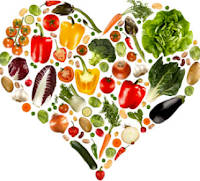 |
Ecolodge in Sweden
Image:
|
Everyone enjoys getting away from the normality of their lifestyle and visiting somewhere new (and hot for us Irish). However a lot of us are also interested in trying not to have a large carbon footprint. So how do we balance both of these things, so that we can enjoy our summer holidays while not destroying our planet? Eco-tourism may be the answer. This means travelling in a sustainable way. It is any form of tourism that does not reduce the availability of resources and does not inhibit future travellers from enjoying the same experience. However is this really possible to do, especially with us living on a small island and flying being the major transport option to get anywhere?
In the past 30 years the earth has lost nearly a third of its natural habitat. Aircraft emissions contribute to greenhouse gases and tourism development, in the shape of new hotels and resorts, continues rapidly in environmentally sensitive areas. However all is not lost; the number of travellers taking eco-tourism holidays is growing three times faster than those choosing mainstream trips and is predicted to make up 5 per cent of the global holiday market by 2024, according to the latest research by the tour operator Thomson.
With a bit of effort, we can all become more eco-friendly in our travels. One of the main methods for this is limiting the amount of air and car travel, due to their greenhouse-gas emissions. Although this is not always possible, perhaps we should be trying to travel by ferry, train and bus instead. Along with this, there are an increasing number of exciting companies promoting new eco-friendly ways to holiday.
Eco Tourism Ireland is one such company for those wanting to holiday right on our own soil. Their belief is to actively contribute to the conservation of local biodiversity and cultural heritage, and ensure that steps have been taken to minimise impact on local nature and culture. Going further abroad, companies such as Responsible Travel can find you an eco holiday which could include staying in tree houses in the Isle of Wight to living in a tepee in Tasmania. If it interests you even more, perhaps a holiday dedicated to conservation would be right for you, such as working on an organic farm in South Africa or rescuing animals in Ecuador. The options are limitless.
So next time you’re thinking about what you’d like to do for your next holiday, think outside the box rather than going for the usual pool-side holiday in Spain. Do something different, make new, exciting memories and care for the earth.
Sinéad Barrett



